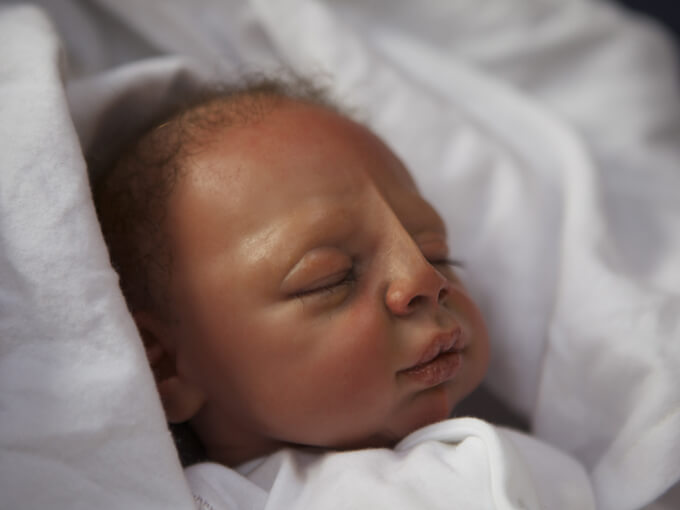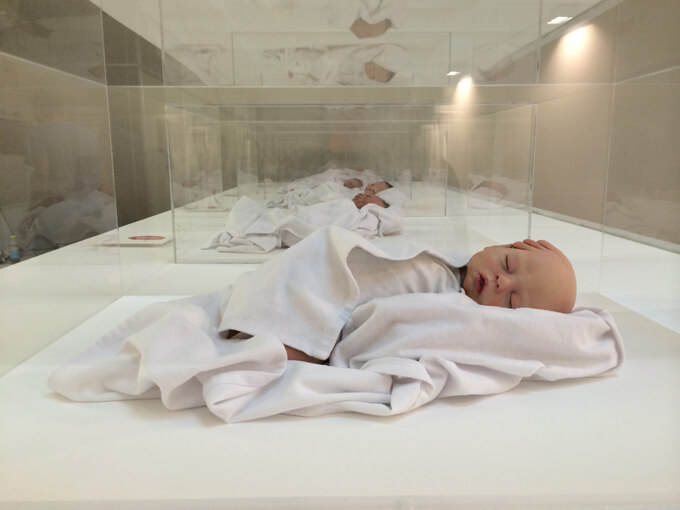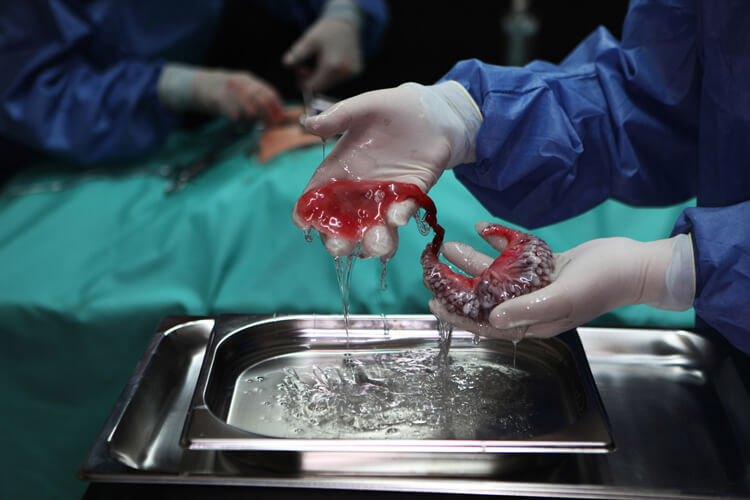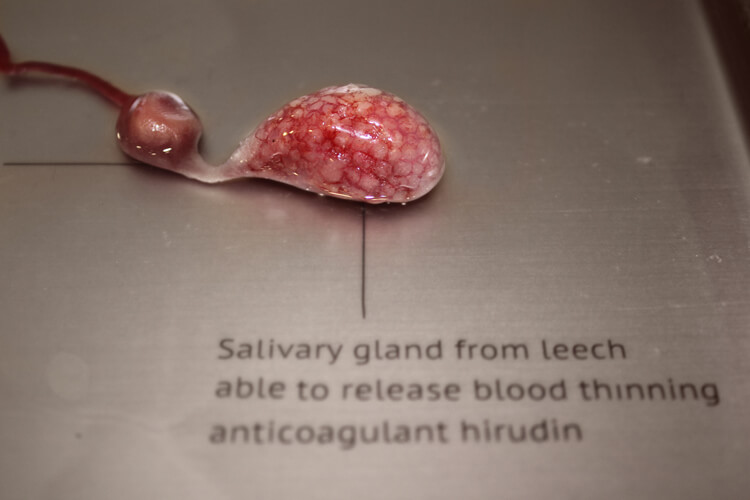Words by Catherine Disney
Transdisciplinary designer and PhD researcher at Cognovo, Agi Haines, is investigating the potential of the human body as a raw material for our design and engineering dreams. Through speculative objects, she aims to encourage emotive responses to the possible application of future technologies for our malleable bodies.
Haines graduated with an MA in Design Interactions, RCA, in 2013 with two equally as enticing works entitled Transfigurations and Circumventive Organs.
In Transfigurations, she explores various surgically implemented body enhancements in newborn babies, pushing the limits of how far a parent might go to ensure their child has the best chances of success in their adult life.
Circumventive Organs is an investigation into the future of medicine through the use of 3D-printed hybrid organs. Haines designed new organs with specific functions with the intention to kick-start the body and prevent death in individuals prone to heart attack, stroke or cystic fibrosis.
Agi Haines’ work acts as a catalyst provoking the exchange of ideas within healthcare and biomedical sciences, whilst continually interrogating the role of the designer in relation to the future of our bodies.
What drew you into working in the intersection of synthetic biology, biomedical sciences and speculative design?
Altogether I’m interested in representation, and there is something special about medical representation, in that it is like a concentrate, it is strong in its intention to present ideas as well as evoke an internal visceral response.
In the history of medical representation of the body, the onset of new images, ideas and even ideologies can develop through visualisations. The possibility to explore new and upcoming biomedical research through creating visualisations or speculations is really exciting territory for designers that want to encourage emotive responses to ideas, such as myself.
I studied biology at school but wasn’t very good at it! My interest in the way we make decisions regarding the importance of certain research over another was fascinating, and it all seemed to come down to representation.
Using something so abstract to represent the human body such as using ink and paper to represent the spleen or a mouse lung for a human lung. It seems medicine should be learnt through a tactile and visual sensibility for representation and being sensitive to this may alter how we accept the onset of future technologies.
Transfigurations explores the potential of the human body manipulated and engineered to solve (physical) future problems. Could you tell us a little bit about the intellectual process?
The body is an amazing site of potential design materials and I found the attitude towards patient’s bodies as a fabric of design can often come across as distant and logistical. Although I believe this attitude is an important aspect of designing medical procedures as it is as equally important for the patient and practitioner, but it has led to friction in representing the modified body.
With this project, I intended to emphasize how we view and represent the body as a potential design material. Looking at the logistics and ethics of using such a material.
The procedures for the babies were designed based on already existing surgeries and I hoped people might actually consider the reality of this when the modifications are not actually based on a distant future speculation, but rather the environmental changes are what might alter the acceptance of these procedures.
How do you imagine the future of the human species?
There seem to be fashions in how we decide to alter the body and this is an ongoing process, as new technologies arise we will find new ways to alter ourselves. Although these alterations seem to develop so slowly we cannot often even see them arise.
I regularly use dentistry as an example; the progress in prosthetic teeth has been developing from historical techniques and now the denture is so engrained in our social understanding of teeth that we hardly see it as a development of our future selves.
The idea of amalgamating products into the body is becoming more socially comprehensible, although still questionably acceptable, we may begin to see our bodies as an open system for design, one in which the material of the body is understood as more manoeuvrable than finite.
The conceptual frame of ‘Circumventive Organs’ is the possibility of bioprinting new organs. Is bioprinting the biotechnical invention that will have more impact in real life in a (not too distant) future?
This technology has the potential to offer amazing possibilities for the future of medicine, potentially eradicating organ transplant lists or even administering skin grafts directly to the skin. But there are always issues with the trial of a new technology and it is difficult to suggest when it might be incorporated into any healthcare system.
An impact that it definitely will make significant changes to will occur in testing, so it would be fantastic if testing cosmetics or chemicals could occur on printed skin rather than the skin of another living animal.
This could mean that this technology could put an end to death becoming a by-product of scientific testing. Also, 3D printing has been quickly incorporated into general practice, which definitely suggests a potential step in this direction.
What directions do you imagine taking your work in?
There is magnificent scope within the topic of human relationships with biotechnology, and I aim to further my research by looking at how speculative design may be considered a conduit for the exchange of ideas within healthcare and biomedical sciences.
In this way, I hope I may be able to consider the network of affects that speculative artwork may have on medical practice. Probing what the role of the designer may be in highlighting important or worthy questions regarding the future of the body.
What is your chief enemy of creativity?
Regularity. In order to create, we should all be shaken up from time to time, as a way to prevent habits from forming. Art and science for example are definitely not dichotomous and I try my best to encourage openness that is often constrained across these disciplinary boundaries.
You couldn’t live without…
Oxygen, but I’m sure there’s a modification for this!










